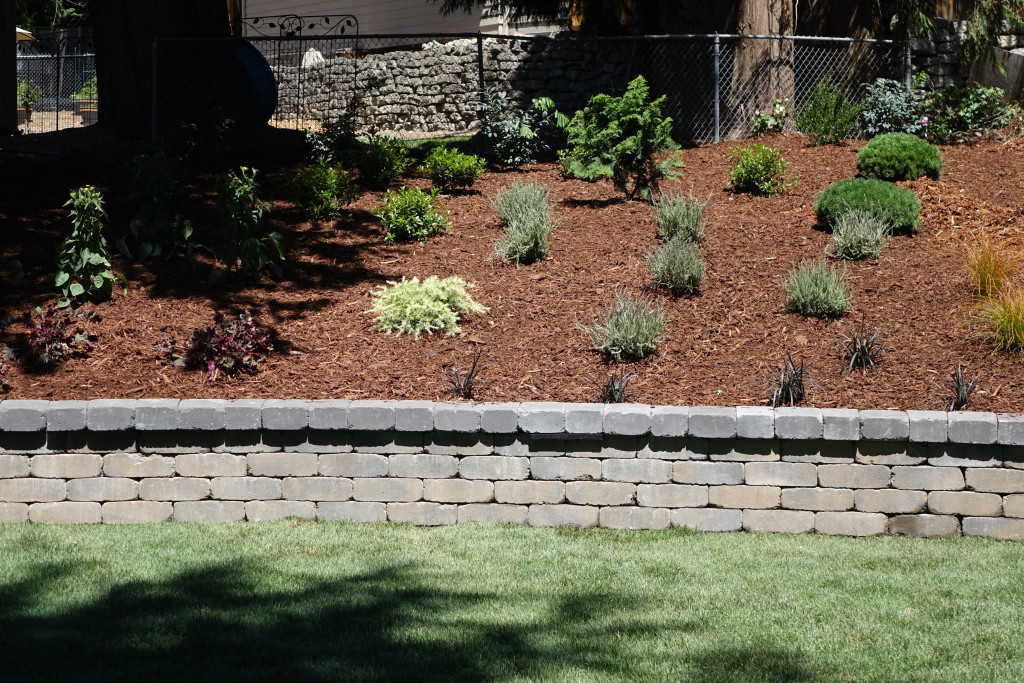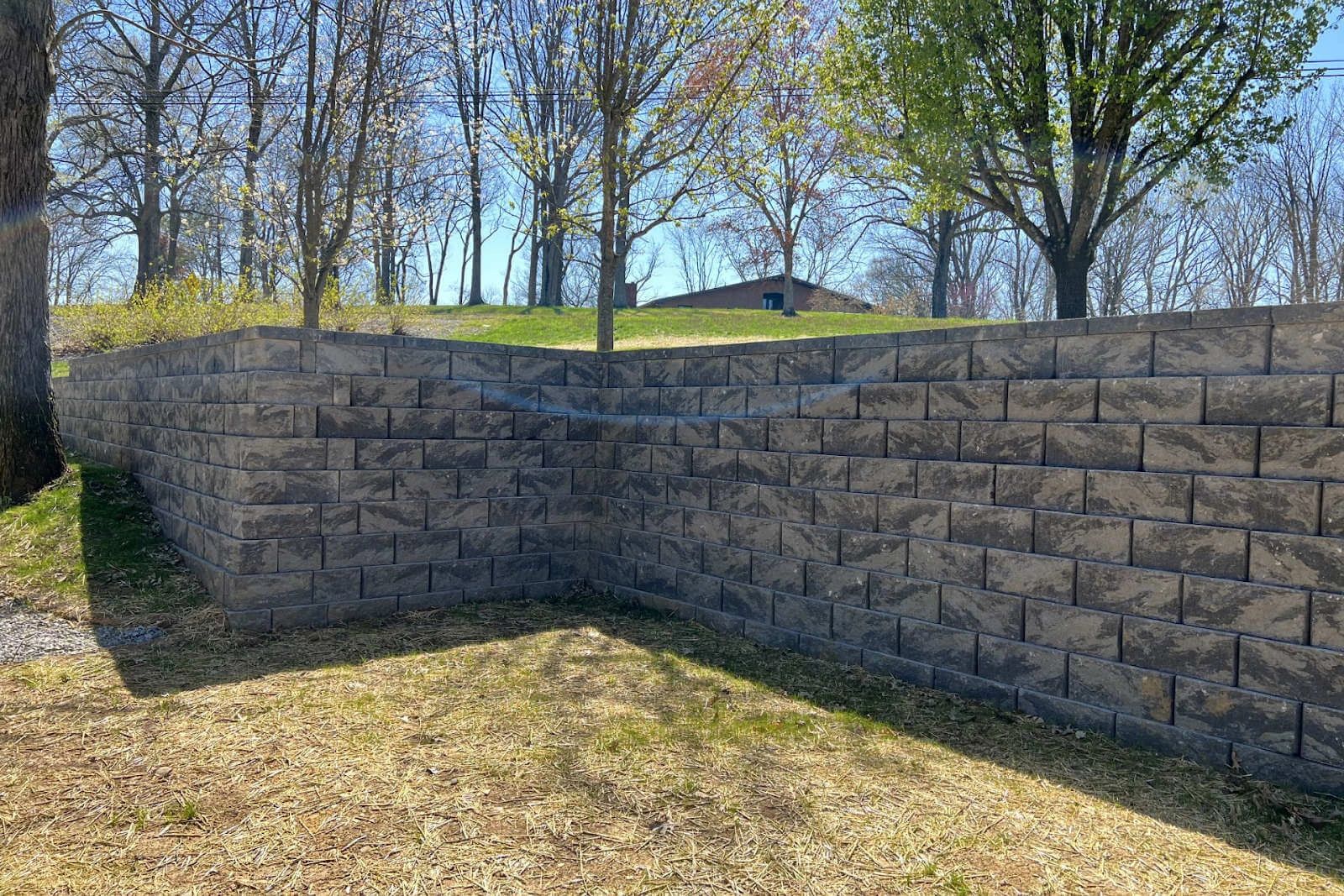Fixing common issues with OKC Precision Retaining Walls: What to look for and when
Trick Factors To Consider for Building Effective Retaining Walls in Your Yard
When you're considering constructing a maintaining wall surface in your lawn, it's crucial to assume concerning a number of vital factors. The wall's purpose, the products you'll use, and the particular dirt conditions can all affect its performance and longevity.
Understanding the Purpose of Your Retaining Wall
When you consider constructing a retaining wall surface, consider its major objective: stabilizing soil and preventing erosion. Retaining walls provide vital support for sloped landscapes, aiding to preserve dirt honesty. You'll find they're essential in locations where water drainage might otherwise get rid of soil, resulting in costly repair services and landscape damage.
By keeping back planet, these walls develop level surface areas for gardens, patios, or pathways. This not only boosts your backyard's aesthetics yet likewise advertises better drain, reducing water merging in undesirable locations. If you're handling steep inclines, a sound retaining wall can prevent landslides, making certain security for you and your home.
Inevitably, understanding the objective of your retaining wall will direct your style decisions and aid you develop a functional, long lasting structure that satisfies your requirements. So, take a moment to assess your landscape; it'll settle over time.
Choosing the Right Materials
When selecting materials for your retaining wall surface, you'll intend to consider durability, visual appeals, and cost. Each variable plays an important duty in ensuring your wall stands the examination of time while looking great and fitting your spending plan. Allow's explore exactly how to make the very best options for your task.
Product Longevity Elements
Picking the ideal materials is vital for the durability and efficiency of your retaining wall, because their longevity directly influences the wall surface's capability to endure environmental stresses. Start by considering your neighborhood climate; materials like concrete and stone resist wetness and temperature level changes well. If you live in an area susceptible to hefty rains, opt for products with great water drainage properties, like gravel or permeable blocks, to prevent water build-up.
Some products do far better in particular dirt kinds, so it's essential to match them accordingly. Selecting sturdy materials warranties your retaining wall stands strong, securing your lawn for years to come.
Visual Layout Choices
Durable products not just ensure your retaining wall surface's architectural integrity yet also play an essential function in its aesthetic charm. Don't fail to remember concerning the wall surface's form-- rounded walls can develop a softer appearance, while straight lines can really feel more structured. By thoroughly picking products that line up with your aesthetic vision, you'll boost your exterior room while guaranteeing your wall stands strong against the components.
Cost-Effectiveness Evaluation
Picking the ideal materials for your retaining wall surface isn't practically aesthetics; it's also crucial for your budget plan. When picking products, consider both ahead of time costs and lasting durability. Concrete blocks may be more expensive at first, yet their durability can conserve you cash on repair work. On the various other hand, timber can be a lot more budget friendly but may call for replacement sooner.
Don't neglect to consider upkeep prices too (OKC Precision Retaining Walls). Some materials, like natural stone, can add charm and require less maintenance, while others could require routine therapies
Ultimately, weigh the pros and cons of each choice against your budget plan and the wall surface's designated objective. Investing intelligently in materials now can stop pricey concerns down the road. Pick products that stabilize price and efficiency efficiently.
Evaluating Dirt Problems and Water Drainage
As you start your task, examining dirt conditions and water drainage is necessary for the success of your retaining wall surface. Sandy soil drains pipes well yet lacks security, while clay dirt can preserve moisture, leading to pressure on your wall surface.
Next, analyze the slope of your backyard. If water normally moves toward your wall surface, you'll need to implement a drain service to stop disintegration and pressure buildup. Consider installing perforated pipes or crushed rock backfill behind the wall to help with drainage.
Finally, observe any type of close-by trees or plants; their roots can affect dirt stability. By understanding your soil problems and executing proper drainage, you'll produce a solid structure for your retaining wall that stands the test of time.
Following Local Building Ordinance
Prior to you begin constructing your retaining wall surface, you require to study local regulations to assure conformity. It's important to understand what permits you must obtain, as this can conserve you from pricey penalties or needing to renovate your job. Taking these steps seriously will help you construct a risk-free and reliable framework.
Research Study Local Laws
Understanding neighborhood guidelines is necessary when preparing More Info your retaining wall job, especially given that developing codes can vary considerably by area. Look for guidelines on wall surface height, products, drain systems, and structural stability. By doing your study upfront, you can guarantee your retaining wall surface satisfies all necessary codes and blends flawlessly into your lawn.
Obtain Essential Authorizations
Once you've investigated neighborhood laws, the following action is to get the essential authorizations for your retaining wall surface project. They may need certain plans or engineering assessments, especially for larger walls. Securing the best approvals can save you from costly fines or having to dismantle your wall surface later on.

Preparation the Layout and Visual Appeal
As you commence intending the layout and appearances of your retaining wall surface, think about how it will certainly integrate with the bordering landscape. Believe about the products you'll utilize-- stone, block, or concrete-- and exactly how they'll complement your home's style and the natural environments in your backyard. Select shades and textures that mix flawlessly with existing attributes like patio areas, pathways, or gardens.
Following, envision the wall's form and elevation. Curved walls can soften a stiff landscape, while straight lines may communicate a more contemporary look. Do not neglect to integrate plants and greenery around the wall for a natural touch; this can enhance its allure and incorporate it right into the atmosphere.
Last but not least, keep in mind performance. Your layout ought to not just be visually pleasing yet also offer its purpose efficiently. By attentively preparing these components, you'll create a maintaining wall that improves your backyard's beauty while meeting its structural function.
Computing Height and Density Needs
To build a durable retaining wall surface, you require to precisely determine its elevation and density requirements based on the dirt problems and the elevation of the slope it will sustain. Begin by evaluating the slope's angle and the kind of dirt, as various soils put in over here differing quantities of stress.
For walls over four feet high, take into consideration a thickness of at the very least 12 inches. If the wall is taller, boost the density proportionally to maintain stability.
Next, calculate the height of the wall by determining the upright range it requires to retain. For each foot of elevation, you should commonly plan for a thickness of one-third of the wall's elevation.
Always bear in mind to make up added variables like water drainage and backfill, which can influence your wall's design. Proper calculations now guarantee your retaining wall stands solid and lasts for several years ahead.
Maintenance and Durability Factors To Consider
While keeping your retaining wall surface may appear like a low priority, disregarding it can lead to significant issues over time. Regular evaluations are necessary; check for cracks, protrudes, or any kind of indications of water damage. Dealing with these problems early can conserve you from expensive repair services down the road.
Watch on drain systems, too. Obstructed drains pipes can trigger water to accumulate, applying stress on your wall and jeopardizing its security. Clear debris and assurance proper circulation to keep long life.
You might also intend to review securing your wall to protect it from dampness and weathering. Depending upon the material, this may need reapplication every couple of years.
Finally, landscaping around your wall surface can support its honesty. Prevent growing big trees nearby, as their origins can weaken the structure. With positive upkeep, your retaining wall can offer you well for many years ahead.

Regularly Asked Concerns
Can I Construct a Retaining Wall by Myself, or Should I Hire a Specialist?
You can certainly construct a keeping wall surface yourself if you have the right devices and knowledge. Nevertheless, working with a professional warranties it's done correctly, particularly for bigger or more intricate frameworks. Consider your ability degree prior to deciding.
What Are one of the most Usual Blunders Made When Structure Retaining Walls?
When building retaining walls, you could ignore appropriate drain, avoid using the ideal products, or forget reinforcement. These typical blunders can lead to structural failure, so take your time and plan thoroughly to prevent problems.
Exactly how Do I Know if My Retaining Wall Needs Support?
You'll recognize your retaining wall surface requires support if you see splits, leaning, or protruding. Look for water merging behind it or dirt erosion near the base. Address these indications promptly to stop additional damage.
What Plants Are Suitable for Landscaping Around a Retaining Wall?
When landscape design around a retaining wall surface, consider utilizing low-maintenance plants like succulents, decorative turfs, or sneaking ground covers - OKC Precision Retaining original site Walls. They'll prosper in those conditions and add charm while avoiding dirt disintegration around your wall surface
Just How Can I Prevent Erosion Around My Retaining Wall?
To protect against disintegration around your retaining wall surface, you can plant ground cover, usage compost, and mount water drainage systems. Consistently examine for water buildup and adjust landscape design to reroute runoff far from the wall.